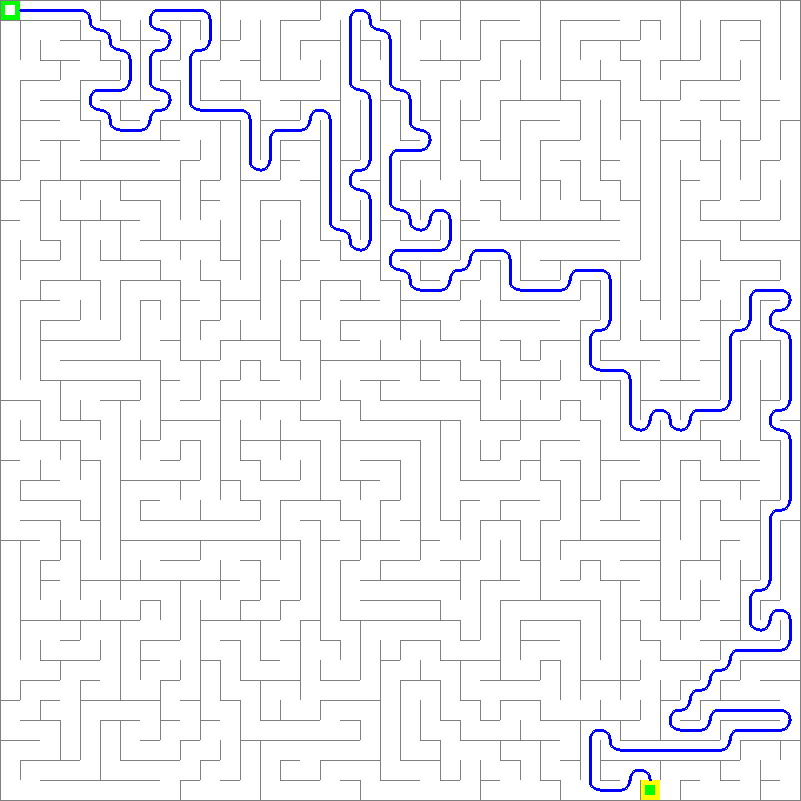Fun and Educational Hangman Game with Pygame
- Ronav Gupta

- Feb 29, 2024
- 3 min read
Hangman is a classic word-guessing game where one player thinks of a word and the other player tries to guess it by suggesting letters. The word to guess is represented by a row of dashes, representing each letter of the word. The guessing player has a limited number of guesses, and each incorrect guess adds to a drawing of a hanged man.
In this blog post, I'll walk you through the process of creating a simple Hangman game using the popular Python library, Pygame. Whether you're a beginner or an experienced programmer, you'll find this project both enjoyable and enlightening.
Getting Started
First, make sure you have Pygame installed. You can install it using pip
pip install pygameNext, create a new Python file for your Hangman game. We'll start by importing the necessary modules
import pygame, os
import random
import time
import requests
import jsonSetting Up the Game
Now, let's set up the basic structure of our game. I'll define some constants for colors and fonts, as well as initialize Pygame
### SCREEN SIZE
WIDTH = 1024
HEIGHT = 683
### COLORS
WHITE = (255,255,255)
BLACK = (0,0,0)
GREY = (192,192,192)
DGREY = (50,50,50)
RED = (207,0,0)
BLUE = (70,70,207)
GREEN = (70,207,70)
### INITIALIZE PYGAME
pygame.init()
clock = pygame.time.Clock()
screen = pygame.display.set_mode((WIDTH, HEIGHT), 0 ,32)
systemExit=False
buffer = 50
alphabet=['a','b','c','d','e','f','g','h','i','j',
'k','l','m','n','o','p','q','r','s','t',
'u','v','w','x','y','z','-']
letters=['a','b','c','d','e','f','g','h','i','j',
'k','l','m','n','o','p','q','r','s','t',
'u','v','w','x','y','z','A','B','C','D',
'E','F','G','H','I','J','K','L','M','N',
'O','P','Q','R','S','T','U','V','W','X','Y','Z']Using Dictionary
Get a random new word from the dictionary. Register for a dev account and get your API key: https://www.dictionaryapi.com/register/index
def picklePicker():
global wordToGuess
word_file = "/usr/share/dict/words"
WORDS = open(word_file).read().splitlines()
if active_sp==True:
randomWord = fix_word(random.choice(WORDS))
randomWord = randomWord.replace("'","").strip()
return randomWord.replace(" ", "-")
else:
return wordToGuess
def fix_word(word):
response = requests.get("https://www.dictionaryapi.com/api/v3/references/collegiate/json/" +
word + "?key=<substitute with your API Key>")
responseString = json.dumps(response.json())
if "shortdef" in responseString:
return word
else:
print("shortdef missing, got response:", responseString)
return random.choice(response.json())Giving user a hint before the last move
Use dictionaryapi.com to get definition of the word.
def lookup_dictionary(word):
response = requests.get("https://www.dictionaryapi.com/api/v3/references/collegiate/json/" + word + "?key=<substitute with your API Key>")
if response.status_code != 200:
# This means something went wrong.
print("Error in dictionary lookup:", response.json())
return ""
else:
short_def = response.json()[0]['shortdef']
print("short_def:",short_def)
return short_def
Drawing the Hangman
Draw the Hangman based on the number of remaining guesses
def draw_hangman(count):
Pi=3.14
global state, gamesLost, invalidTries
if count > 0: ##Head
pygame.draw.circle(screen, GREY, (300, 180), 50, 10)
if count > 1: ##Eyes
pygame.draw.circle(screen, GREY, (280, 165), 10, 5)
pygame.draw.circle(screen, GREY, (320, 165), 10, 5)
if count > 2: ##Mouth
if len(invalidTries) == 3:
pygame.draw.arc(screen, GREY, [280,180,40,30], Pi, 2*Pi, 4) #Smile
elif len(invalidTries) == 4:
pygame.draw.arc(screen, GREY, [280,184,40,20], Pi, 2*Pi, 4) #Smile
elif len(invalidTries) == 5:
pygame.draw.arc(screen, GREY, [280,188,40,10], Pi, 2*Pi, 4) #Smile
elif len(invalidTries) == 6:
pygame.draw.arc(screen, GREY, [280,188,40,20], 2*Pi, Pi, 4) #Frown
elif len(invalidTries) == 7:
pygame.draw.arc(screen, GREY, [280,188,40,30], 2*Pi, Pi, 4) #Frown
if count > 3:
pygame.draw.line(screen, GREY, (300, 230), (300, 380),10)
if count > 4:
pygame.draw.line(screen, GREY, (300, 270), (380, 230),10)
if count > 5:
pygame.draw.line(screen, GREY, (300, 270), (220, 230),10)
if count > 6:
pygame.draw.line(screen, GREY, (300, 380), (340, 450),10)
showWordDefinition(610)
if count > 7:
pygame.draw.line(screen, GREY, (300, 380), (260, 450),10)
state+=1
gamesLost+=1
Play the Game
def play():
global systemExit, state, invalidTries, wordToGuess, answer, gamesWon, p1name, p2name, active_player, mpStats
letter_clicked = ''
for event in pygame.event.get():
if event.type == pygame.QUIT:
systemExit=True
return
# when the user clicks the start button, change to the playing state
elif event.type == pygame.MOUSEBUTTONDOWN:
if event.button == 1:
if ((event.pos[0] - 495)%60 <= 30) and ((event.pos[1] - 100)%100 <= 30):
xIndex= int((event.pos[0] - 495)/60)
yIndex= int((event.pos[1] - 100)/100)
if xIndex >= 0 and yIndex >= 0:
letter_clicked = alphabet[xIndex + yIndex*7]
if letter_clicked in wordToGuess:
found_indexes=find(wordToGuess, letter_clicked)
for i in found_indexes:
answer[i]=letter_clicked
else:
if letter_clicked not in invalidTries:
invalidTries.append(letter_clicked)
draw_background()
if active_sp==True:
showGameNumber()
else:
showMpStats()
draw_hangman(len(invalidTries))
if list(wordToGuess)==answer:
state+=1
if active_sp == True:
gamesWon+=1
else:
if active_player == 1:
mpStats[p1name]+=1
else:
mpStats[p2name]+=1
pygame.display.flip()Main Game Loop
Finally, let's create the main game loop. In this loop, we'll handle user input, update the game state, and draw the game
if __name__ == "__main__":
os.environ['SDL_VIDEO_CENTERED'] = '1' #center screen
pygame.init()
pygame.display.set_caption("Hangman")
screen = pygame.display.set_mode((WIDTH, HEIGHT), 0 ,32)
Myclock = pygame.time.Clock()
while True:
if systemExit==True:
pygame.quit()
break;
if state == 0:
welcome()
elif state == 1:
enter_a_word()
elif state == 2:
play()
elif state == 3:
results()
Myclock.tick(64)
exit()
Conclusion
And there you have it! With just a few lines of code, you can create a fun and educational Hangman game using Pygame. Feel free to customize the game further by adding more words, improving the graphics, or implementing multiplayer functionality.
Have fun playing and learning with your new game!




Best hangman rendering ever!